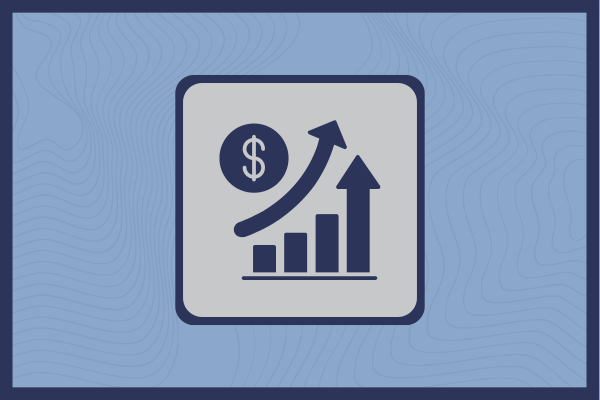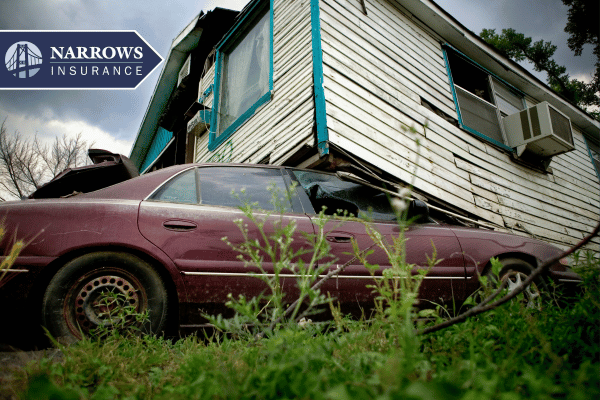
Insurance Premium Surge: What is Causing the Massive Increase?
Insurance premiums have climbed steadily over the last several years. If you have wondered what the reason behind this increase is, you are not alone. The truth is, there isn’t a single contributing factor for these increases, but multiple. Some of these things have been created out of recent events across the United States, and others are more “normal” reasons why you may be paying more for insurance today than a year ago. To better understand these rate increases, we need to understand the concept of risk sharing in the insurance industry.
What is Risk Sharing?
Risk sharing is a fundamental insurance concept. It is the idea that insurance companies collect a premium from a large group of people to create a pool of money. It is from this pool that claims are paid. The insurance company evaluates the overall risk of each person to see what their likelihood of a loss is. This is done during the quoting process, where the insurance company looks at the applicants age, gender, location, history, etc., to determine if they are going to insure them or not, and for what price.
Let’s look at an example to better understand this. ABC Insurance Company collects $1000 in premiums from 1000 people. ABC Insurance Company now has $1,000,000 to cover the claims of these 1000 people. Due to their risk calculations, they expect that 100 of these people will have auto damages they will have to pay for. Let’s assume that the damages average $2500 a person for a total of $250,000 in claims payouts. The insurance company would be profitable and would be able to offer more favorable premiums in the following years.
Now, let’s say that ABC Insurance Company didn’t calculate the risk very accurately. Instead of 100 people having claims it was 500. Assuming the average repair cost was the same at $2500, ABC Insurance Company now has to pay out $1,250,000 to cover these claims. Because they only collected $1,000,000 in premiums they are in the negative for the year. They will likely have to charge more for insurance in the following years to recoup what they lost this year.
Obviously, this is a simplified explanation of risk sharing in the insurance industry, but hopefully it helps you understand the fundamentals. When keeping this concept in mind, you can start to see how things that have happened in the United States over the last several years have impacted insurance rates.
Premium Increase Factors
As previously mentioned, there are multiple “normal” reasons that you might be seeing a price surge in your insurance rates. Most of these have to do with the underwriting process. If you have recently experienced any of these things, it is likely that it is the reason your rate increased.
Claims History
If you have had to use your insurance for anything over the last few years, this will cause you to have to pay more. Accidents and damage are strong indications that your insurance company will charge you more.
Underwriting Changes
If you have purchased a new vehicle or moved to a new address, you may see a rate increase, especially if the new vehicle is newer and more expensive than your old car. Location is an influential factor in premium determination. Generally speaking, the closer to the city you live, the more expensive the insurance. This is because there are typically higher levels of crime in metro areas compared to rural areas.
Advanced Technology
Cars, both new and used, cost more than they ever have before. Technology is stuffed into new cars wherever possible, which makes them much more expensive to insure due to the cost of repairs. In the past, a truck tailgate was several hundred dollars and took a matter of minutes to replace. Today, some trucks that have multi-function tailgates, such as the GMC Sierra, cost thousands and take much longer to replace. This is due to backup cameras, parking sensors, and other components that require additional work to install.
Other Factors
As mentioned at the beginning of this post, there are several variables for the high insurance prices that are from events that have happened across the United States over the last few years.
Pandemic & Supply Chain Issues
The pandemic caused lots of issues with businesses, especially the supply chain. Due to supply chain challenges, it was extremely difficult to find parts for essentially everything for quite a while. The automotive industry saw huge challenges with production because of this, causing vehicle prices to soar. This affected the insurance industry because it took much longer to repair damaged vehicles.
Increased Wages
Another reason vehicle repairs are more expensive today than years ago is that employees at the shop are paid more. If a shop went from paying technicians $20 and now it is $25, they are going to charge more for the services they provide. That means repair costs go up, and insurance costs more as a result.
Natural Disasters
In the last several years, the United States has been ravaged by natural disasters from coast to coast. California has seen horrible wild fires and floods while Florida has seen hurricane after hurricane, resulting in billions of dollars of damage. Fortunately, the government offers some aid for catastrophic natural disaster losses. Nevertheless, insurance companies still take huge losses during these events, resulting in higher insurance rates in the following years.

Crime & Looting
Crime has skyrocketed over the last few years. Businesses of all sizes have seen losses ranging from shoplifting to full blown looting. This has caused a lot of hardship for businesses all over as not only is insurance more expensive, but insurance companies are being more restrictive on who they will insure. There is a somewhat common mindset where people think that it is okay to loot and steal from large retailers. The idea is that they profit a ton of money anyway, and have insurance to cover the losses.
While insurance does cover these losses, it still negatively impacts the consumers. Remember the concept of risk sharing? Let’s say Target gets looted and their insurance covers the loss. You happen to have the same insurance company as Target. Whether you filed any claims or not, you will be negatively affected by Target’s losses because the payout is from the same pool of money.
Conclusion
To sum things up, the insurance industry is reactive. Events that go on around the country and the world eventually trickle down and impact the insurance world to some capacity. It can take years for the changes to be made. It is a good idea to stay informed about what is going on so that you can plan and prepare in advance.
If your rates have increased recently and you would like to explore options to save some money, contact us at Narrows Insurance. Whether you need personal or commercial coverage, we have multiple options to help you find a better rate with the same coverage. Contact us today!

